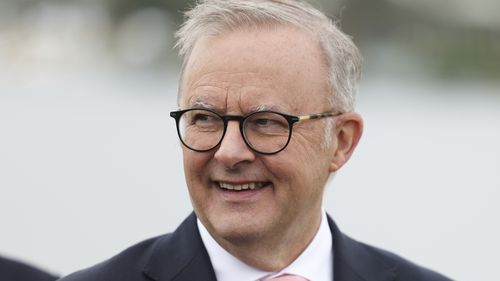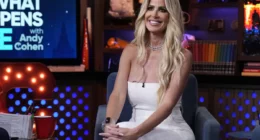
With the Coalition targeting the outer suburbs as its most likely path to victory, snatching one of those seats off the opposition would be a major boost to Labor’s hopes of re-election.
Similarly, neighbouring Deakin is the tightest seat heading into the election. It’s currently in the hands of shadow housing minister Michael Sukkar, who suffered a 4.5 per cent swing against him in 2022.
Anything close to a repeat would spell disaster for him, as his current margin is just 0.02 per cent.
Moore in Perth’s northern suburbs was one of the Liberal’s few good news stories at the last election when it was retained by Ian Goodenough.
But after missing out on Liberal preselection, Goodenough will run as an independent and has signalled he won’t direct preferences to his former party, giving Labor a leg-up in a seat they only need a swing of 0.91 per cent to flip.
Another ultra-marginal contest on the government’s radar is Sturt. James Stevens saw his buffer in the eastern Adelaide seat collapse from 6.9 per cent in 2019 to 0.5 in 2022, and it’s dropped again to 0.45 per cent after redistribution.
While it’s only voted Liberal since 1972, a strong Labor state government and the nomination of local councillor Claire Clutterham have Sturt in play this year.
Anthony Albanese has previously declared the Tasmanian seat of Bass as a “must-win”, although defeating local Liberal MP Bridget Archer will be a tough ask – having built a reputation for crossing the floor, she retained the electorate in 2022, even gaining a narrow two-party preferred swing.
The government is also hoping to win back neighbouring Braddon, sending senator Anne Urquhart onto the lower-house ticket, but with a margin beyond 8 per cent, it appears a tough ask.
Then there’s New South Wales, where Labor would dearly love to reclaim two seats it once considered strongholds: Fowler and Banks.
Both in south-western Sydney, Banks appears the more winnable seat with a margin of 2.64 per cent.
Fowler had been won by Labor at every election since its creation in 1984 before a disastrous piece of pre-selection in 2022, when Kristina Kenneally was parachuted into the seat at the expense of local lawyer Tu Le.
The former NSW premier suffered a 15.6 per cent swing against her as independent Dai Le – the local deputy mayor – won the seat.
Tu Le has been preselected for Labor this time around, but with Dai Le now enjoying a higher profile and the benefit of incumbency, a decision made three years ago could cruel the government’s chances this time around.
The curious case of Queensland
Despite being the third-biggest state, Queensland isn’t particularly important when it comes to the Coalition picking up seats, purely because Labor holds so few of them there.
It only has five of the state’s 30 electorates – several of which are home to high-profile MPs, including Treasurer Jim Chalmers in Rankin (9.1 per cent margin), Speaker Milton Dick in Oxley (11.6 per cent) and newly minted cabinet minister Anika Wells in Lilley (10.5 per cent).
If the government loses those, it’ll likely be part of such a comprehensive nationwide swing to the Coalition that three or four seats won’t really matter.
Opposition Leader Peter Dutton holds the LNP’s most marginal electorate in the Sunshine State, but the recent state election suggests Labor’s chances of picking up seats off the opposition are slim.

The government is eyeing off the nation’s northernmost seat of Leichhardt (3.44 per cent margin), where long-serving LNP MP Warren Entsch is retiring, but the Coalition may be a better chance of flipping Blair in outer Brisbane (5.23 per cent).
Where Queensland could be instructive is the three inner-Brisbane seats held by the Greens: Brisbane, held by Stephen Bates on a 3.73 per cent margin, Griffith (Max Chandler-Mather; 10.46 per cent) and Ryan (Elizabeth Watson – Brown; 2.65 per cent).
All loom three-way contests between the Greens, Labor and the Coalition where preference flows will play a crucial role.
While Chandler-Mather is the most likely to retain his seat – he alone of those three Greens MPs finished top on first preferences, and has built a high profile with his campaigning on the housing crisis – the other two could end up falling any one of three ways.
One or two gains for Labor would be a valuable buffer, with losses expected in NSW and Victoria, while if the LNP picks up the seats it used to hold, it would put the Coalition a lot closer to winning the election.
Tomorrow, we examine the seats where the teal independents will be looking to build on their success in 2022.





